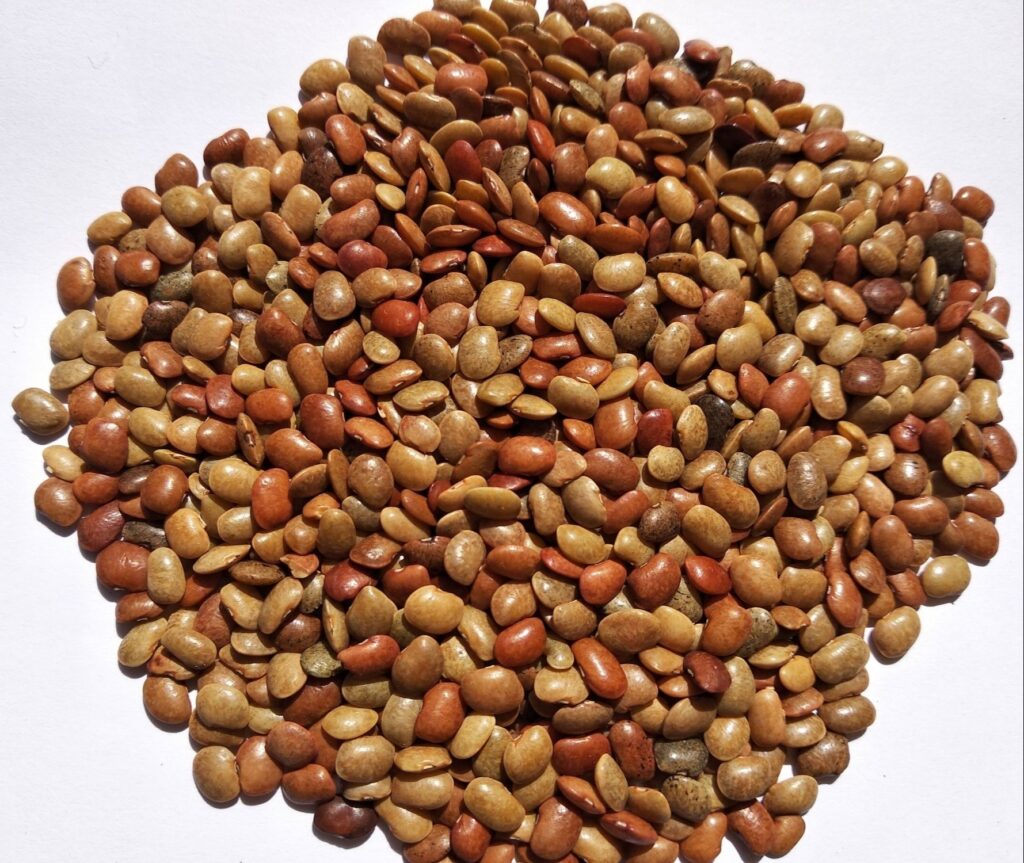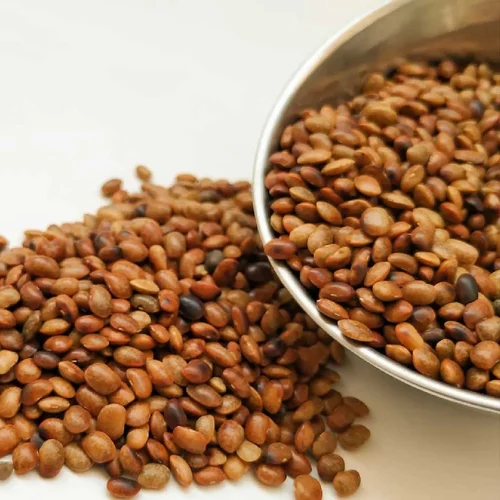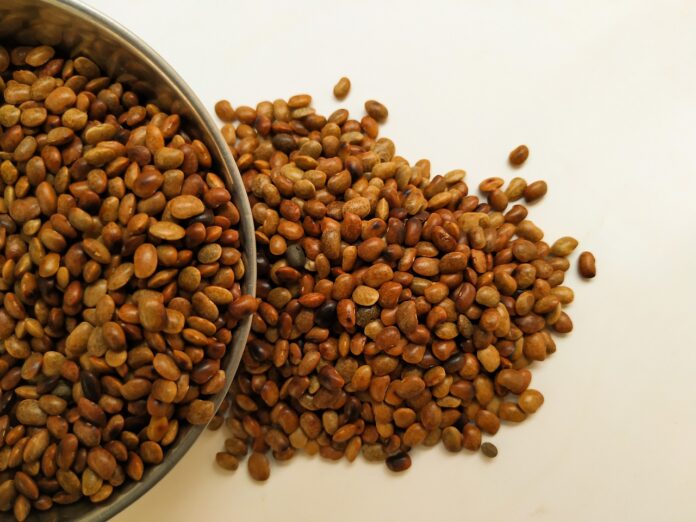INTRODUCTION:
Horse Gram (Macrotyloma uniflorum) is a drought-resistant legume widely grown in India and other parts of South Asia. It is considered one of the most nutritious pulses, rich in protein, iron, calcium, and dietary fiber. Traditionally used in rural and Ayurvedic diets, horse gram is known for its health benefits, including aiding digestion, managing diabetes, and helping in the treatment of kidney stones and obesity. The crop is well-suited for dryland farming, as it thrives in poor soils with minimal water. In addition to human consumption, horse gram is also used as fodder for livestock. Its hardiness, nutritional value, and medicinal properties make horse gram an important crop for both food and ecological

Hindi: Kulthi
Marathi: Kulith
Tamil: Kollu
Telugu: Ulavalu
Kannada: Hurali
Malayalam: Muthira
Gujarati: Kulthi
Bengali: Kulthi Dal
Punjabi: Kulthi
Urdu: Kulthi
Odia: Kulthi
Nepali: Kultho
Sanskrit: Kulattha
HEALTH BENEFITS:

High in nutrients:
Horse gram is packed with protein, fiber, iron, calcium, and other essential vitamins and minerals.
Weight management:
The high fiber and protein content promotes a feeling of fullness, which can help reduce calorie intake and support weight loss efforts.
Antioxidant properties:
Horse gram contains antioxidants that protect cells from damage and can boost overall immunity.
Diabetes management:
It has a low glycemic index and can help control blood sugar levels by slowing carbohydrate digestion and reducing insulin resistance.
Kidney health:
Its antioxidants help prevent the hardening of salts, which can help prevent kidney stones.
Cold and cough relief:
Consuming horse gram soup can help clear congestion by melting mucus and provide relief from colds, fevers, and bronchitis.
Liver and blood health:
It can protect the liver, improve its function, and help maintain blood purity.
Improves Heart Health
Helps lower bad cholesterol and improves circulation.
Boosts Energy
Provides long-lasting energy and fights fatigue.
Supports Menstrual Health
Used in traditional medicine to relieve menstrual discomfort.
Natural Detoxifier
Helps cleanse the body and remove toxins.
SIDE EFFECTS:

Flatulence And Digestive Issues
Digestive discomfort in some individuals, especially if they are not accustomed to a high-fibre diet. Gradual incorporation and proper cooking methods help alleviate these issues. The high fibre content in horse gram may cause flatulence.
Allergic Reactions
Some people may be allergic to legumes, including horse gram.
Interference With Medications
Horse gram may interact with certain medications, affecting their absorption or effectiveness. It is advisable to consult a doctor before making significant changes to your diet if you are on medication.
Not Suitable For Everyone
While horse gram can be beneficial for many, it may not be suitable for everyone. Specially for pregnant or breastfeeding women, individuals with specific health conditions, or those on special diets.
HOW TO USE:
Soaking:
Soak the horse gram seeds in water for 6-8 hours or overnight. This helps soften them and reduces cooking time.

Cooking:
Boil or pressure cook the soaked seeds until they become soft. Proper cooking removes harmful substances and improves digestion.
In Soups and Stews:
Add cooked horse gram to soups, dals, and stews for a protein-rich meal.
Sprouted Horse Gram:
You can sprout horse gram by soaking it for a day and then keeping it moist for a couple of days. Sprouts can be eaten raw in salads or lightly cooked.
Roasted Snack:
Roast horse gram seeds and eat them as a healthy, crunchy snack.
Flour:
Grind dried horse gram into flour and use it to make rotis (flatbreads) or add it to other flours for baking.
Traditional Remedies:
In Ayurveda, horse gram is boiled with water to make a decoction used for medicinal purposes like treating kidney stones or joint pain.
Tips:
Always cook horse gram properly before eating.
Combine it with rice or other cereals to get a balanced protein intake.
Start with small amounts if you are new to horse gram to avoid digestive discomfort.




